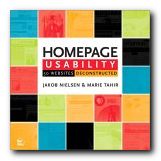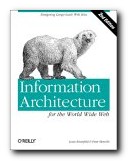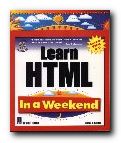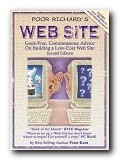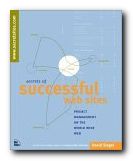fourteen steps to faster loading web sites
Steve Souders calls himself a ‘frontend engineer’. He’s a designer at Yahoo responsible for making their site work faster. He explains fourteen strategies for making web pages appear more quickly in a browser. And they’re not overly-technical. In fact he reveals his basic purpose from the outset in what he calls his Performance Golden Rule: “Only 10-20% of the end user response time is spent in downloading the HTML document. The other 80-90% is spent downloading all the components of the page”. From this flows his objective: the book is devoted to showing you his favoured methods of reducing that 80-90% time deficit and speeding up your page delivery.
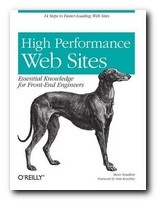 First he suggests that all scripts and any stylesheets should be rolled up together into one sheet each. That means that the server only makes one HTTP request per page instead of several. All this shaves valuable milliseconds off delivery time. Second (if you’re a big organisation) he suggests that you use a content delivery network. This means placing your web content on a number of different geographically disparate servers. Visitors making requests for your pages will get them more quickly from the nearest available source. Amazingly, some companies offer this service free of charge.
First he suggests that all scripts and any stylesheets should be rolled up together into one sheet each. That means that the server only makes one HTTP request per page instead of several. All this shaves valuable milliseconds off delivery time. Second (if you’re a big organisation) he suggests that you use a content delivery network. This means placing your web content on a number of different geographically disparate servers. Visitors making requests for your pages will get them more quickly from the nearest available source. Amazingly, some companies offer this service free of charge.
You can Gzip your content and your stylesheets, which might result in a 70%+ saving in file size, and he recommends putting stylesheets in the header and scripts at the bottom of the page.
He illustrates every one of the suggestions he makes with ‘before and after’ examples on his own web site – so it’s possible to check the effects and see his code.
Some of his tips seem better suited to large scale rather than small scale sites, but he shows in each case how you can best judge the decision for adopting them on your own site.
A knowledge of JavaScript and style sheets would be useful for understanding the details of his explanations, particularly if you are going to follow him into the process of obfuscating and munging your code. As you can perhaps guess from this, he’s much given to inventing his own jargon:
This step could also be an opportunity to minify the files … [You should] analyze your pages and see whether the combinatorics is manageable.
In the last section of the book he analyses the construction and performance of ten large scale sites (rather as Jakob Nielsen does in his Homepage Usability). The entry pages of Amazon, YouTube, CNN, Wikipedia, eBay, and MySpace are all put through tests, and the results show. (Not surprisingly, Google is fastest of all.) He then shows you how they could speed up their page delivery by implementing those of his fourteen rules which are appropriate.
In fact as one of his pre-publicity supporters observes: “If everyone would implement just 20% of Steve’s guidelines, the Web would be a dramatically better place “.
© Roy Johnson 2007
Steve Souders, High Performance Web Sites, Sebastopol (CA): O’Reilly, 2007, pp.146, ISBN: 0596529309
More on web design
More on digital media
More on technology
